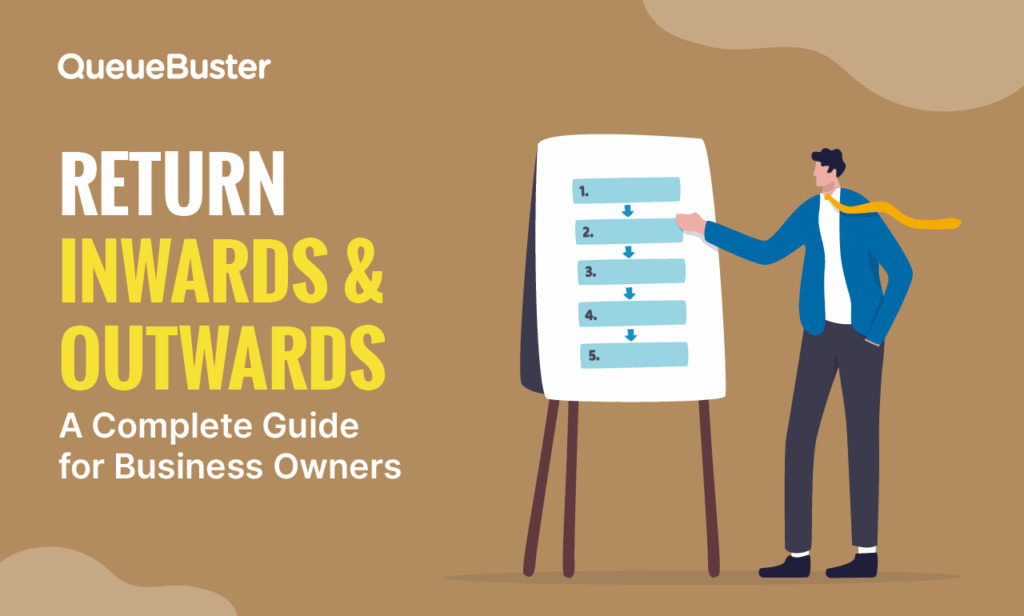
How to Successfully Implement E-Invoicing in 5 Steps?
How to Successfully Implement E-Invoicing in 5 Steps?

By QueueBuster Team Published: April 21st, 2023
In a fast-paced world that continues to change so rapidly, it is indispensable for a business to be equipped with the latest technologies.
E-invoicing is becoming increasingly popular in many countries as governments and businesses seek to digitise their invoicing processes to reduce costs, increase efficiency, and improve transparency.
In India, the GST E-invoicing system was introduced in 2020 to standardise the invoicing process and reduce errors and fraud. In the European Union, E-invoicing is mandatory for public procurement contracts as part of the European Single Market initiative.
Apart from reducing the scope of errors in a business, QB E-invoicing software can help improve the efficiency of an organisation by saving time and resources used in the production of manual invoices.
In this article, we will discuss how to implement E-invoicing software in five simple steps. However, before that, let’s first try to understand what exactly is E-invoicing and how could it help a brand excel.
What is E-invoicing?
E-invoicing, also known as electronic invoicing, is the process of sending and receiving invoices in a digital format rather than a paper-based format. It involves the use of electronic devices and communication networks to create, transmit, and process invoices.
E-invoicing can take many forms, such as PDF invoices attached to emails, invoices sent through a web-based portal, or invoices transmitted via electronic data interchange (EDI). The key feature of e-invoicing is that it eliminates the need for manual data entry and paper-based processing, making the invoicing process faster, more accurate, and more efficient.
How Can E-invoicing be Beneficial for Your Business?
E-invoicing, or electronic invoicing, can provide numerous benefits for your business, including:
- Increased efficiency: It streamlines the invoicing process by automating many of the manual tasks associated with traditional paper-based invoicing. This reduces errors, saves time, and also, increases overall efficiency.
- Faster payment processing: It can furthermore help speed up the payment process by reducing the time it takes for invoices to be processed and paid. This improves the cash flow and thus reduces the need for manual follow-up.
- Cost savings: E-invoicing generating software can help reduce the costs associated with traditional paper-based invoicing, such as printing, mailing, and storage costs. It can also help reduce the time and resources needed to manage invoicing and payment processing.
- Improved accuracy: With E-invoicing, there is less scope for making errors. It additionally improves accuracy by automating many of the manual tasks associated with traditional invoicing, which helps ensure that invoices are processed correctly and reduces the risk of disputes or payment delays.
- Better visibility and control: E-invoicing can provide better visibility and control over the invoicing process by allowing you to track invoices in real-time and receive automated alerts for any issues or discrepancies. This can help improve transparency and reduce the risk of fraud.
- Environmental benefits: Manual invoices with papers can have massive repercussions on our environment. With E-invoicing, we can reduce the environmental impact of traditional paper-based invoicing by reducing the need for paper, printing, and mailing. This can help your business reduce its carbon footprint and support sustainability initiatives.
How to Implement an E-invoicing Solution in 5 Simple Steps?
Implementation of e-invoicing software is an effortless process. Here are five general steps to implement e-invoicing:
- Analyse your current invoicing process: The first step is to analyse your current invoicing process to understand the key pain points and inefficiencies. This will help you identify which parts of the process can be automated and where e-invoicing can bring the most benefits. In order to make the best decision, you must ask yourself the following questions:
- Does my company require an E-invoicing solution?
- Are my employees trained to handle E-invoicing?
- Would an E-invoicing solution help my brand? If yes, how?
Giving thought to such questions and answering them in detail can help you understand your organisational requirements, which will ultimately allow you to make a more beneficial decision.
- Choose an e-invoicing generator software: Once you have identified the areas where e-invoicing can improve your invoicing process, you need to select an e-invoicing solution that best fits your business needs. There are many options available in the market, ranging from cloud-based software solutions to integrated systems that automate the entire invoicing process.
Make sure to conduct thorough research before making a choice. The e-invoicing solution that you select should offer you updates to keep up with the changing market trends. Furthermore, your software provider company should ensure constant support throughout the journey.
- Integrate e-invoicing with your existing systems: After selecting an e-invoicing solution, you need to integrate it with your existing accounting or ERP system to ensure smooth and seamless invoicing processes. This integration will allow your systems to communicate with each other, automate data transfer and reduce manual data entry. Once the integration is done, it is important to test the integration between the e-invoicing system and your existing systems to ensure that everything is working as expected.
- Train your employees: Once the e-invoicing solution is integrated, you need to train your employees on how to use the new system. Training your employees is indispensable as it will help them understand how to create, send, and receive e-invoices, as well as how to handle any issues that may arise during the invoicing process. They must clearly comprehend the objectives you intend to achieve with the e-invoicing process and work towards it with the aim of ultimately achieving the organisational goals.
- Monitor and optimise: Finally, you need to monitor the e-invoicing process to ensure it is working effectively and identify any areas where it can be optimised. Regular monitoring will help you identify and address any issues, such as delayed payments or errors in the invoicing process, and make adjustments to improve your overall invoicing process. It is crucial to keep a regular check on the functioning of the process to ensure a seamless e-invoicing process that is fast and error-free.
With the above-mentioned steps, you can easily implement E-invoicing software in your business and avoid the struggles of manual invoicing, which could be time-consuming, and erroneous and can affect your customers’ experience negatively.
E-invoicing can provide numerous benefits for your business, from increased efficiency and faster payment processing to cost savings and improved accuracy. By adopting e-invoicing, you can improve your invoicing process and help your business run more smoothly and efficiently.
Implementing E-invoicing is a simple process. To begin with it, you first need to analyse your current invoicing process to understand your organisation’s invoicing requirements clearly. Once you have recognised the pain areas and have decided to switch to e-invoicing, you are then required to find a reliable E-invoicing solutions provider. After that, you have to get your E-Invoicing generator software integrated with your current ERP system.
In order to ensure the smooth functioning of the software, you then have to ensure that your employees are trained to use the E-invoicing software. Once this is done, as a business owner, you should monitor and analyse the functionality of the E-invoicing software. You can check if any special areas require attention for their optimisation.
E-invoicing solutions can make operations simpler at your business. Get your E-invoicing software demo at Queue Buster now!
Popular Posts

Carbon Credit Companies in India: Driving Climate Action Through Innovation
As India accelerates toward sustainable development and net-zero targets, carbon credits are […]

Return Inwards & Outwards: Meaning & Examples
In a fast-paced world, inventory-driven market like India, managing your stock and […]